Formidable women of Chesham Bois
This article is written by Alison Bailey, who coordinates the Chesham Bois History Group, and is based on a talk she gave for Amersham Museum in 2014 which gave an impression of the Home Front through the experiences of a group of Chesham Bois women during World War I. She has also written more detailed articles about some of the women and there are links below to those pages.
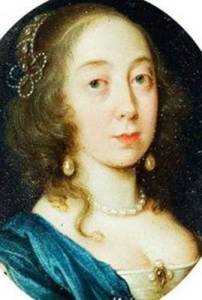

You can trace a long line of extraordinary, pioneering women who have been associated with Chesham Bois from Lady Jane Cavendish (noted playwright and poet, the grand-daughter of Bess of Hardwick, who married Lord Cheyne, the Lord of the Manor of Chesham Bois in 1654) to Dame Stephanie ‘Steve’ Shirley (pioneering business woman and philanthropist) who lived in the Old School House, Bois Lane for 25 years.

At the outbreak of the war in 1914, Chesham Bois was still a predominantly rural area despite the arrival of the railway and life in general was hard. Women were an important part of the local economy in 1914. The poorer women worked on the farms or did low paid “piece work” in the cottage industries such as straw plaiting. Some of the women living in lower Bois worked in the boot making industry in Chesham such as the Hayes Factory in Waterside, which was a big employer of women at the time. They mainly worked as ‘closers’, sewing and stiffening the boot’s upper, adding button holes and decorations. Women also made up the majority of employees in Chesham’s delicate and intricate brush making industry and in the laundry industry. The Royal Bucks Laundry, founded in 1905 in Waterside, at one time employed 180 women and 40 men. Women were also employed as domestics in the bigger houses being built around Chesham Bois Common. In the 1911 Census John Gibbon How, a local solicitor and his wife Alice had four servants; a cook, a parlourmaid and two housemaids at Kensworth on North Road.
Fewer better-educated, middle-class women were employed locally. The head of the village school was a Miss Florence Grimsdell and Heatherton House was founded in 1912 by Miss Edith Harrison and Miss Ysolde Walters. Miss Lavinia Cutler was the Post Mistress at 3 Anne’s Corner.

Down in the valley Chesham had an active suffragette movement founded by Mrs Emily Brandon of Eskdale Avenue. This was the only branch of the Women’s Social and Political Union (the WSPU was founded by Emmeline Pankhurst in 1903) in the county. Chesham was also home to the most infamous male supporter of the movement, Hugh Franklin of Chartridge Lodge. He was repeatedly imprisoned and force-fed and may have inspired the most famous suffragette ‘outrage’ in Buckinghamshire, the burning down of Saunderton Station. The suffragettes would certainly have been a hot topic of conversation around the breakfast tables of Chesham Bois immediately before the war as the Bucks Examiner had a supportive editor and reported all meetings. The paper had even had an anonymous suffragette column, probably written by Emily Brandon. Nevertheless the majority of women locally in favour of women’s suffrage were probably supporters of the more moderate National Union of Women’s Suffrage Societies (NUWSS) founded by Millicent Fawcett.
The Labour politician Ramsay MacDonald (later the first Labour Prime Minister) and his wife Margaret, rented Lindfield in Bois Lane (next door the shops) as their family’s weekend home in 1905. Margaret who died in 1911 was a social reformer and served on the NUWSS. She was opposed to militant action.
There was also a strong anti-suffragist movement locally chaired by Arthur Lasenby Liberty and Lady Susan Truman of Bayman Manor, Chesham (she was living in Manor Farm, Chesham Bois in 1911 Census) with the support of other prominent, wealthy local residents such as Mrs Sandford Freeman of ‘High Wood’ Chesham Bois. Chesham Bois was represented at the NUWSS’s National Pilgrimage to London in 1913. The ‘Watling Street Route’ passed through High Wycombe, Beaconsfield, Gerrards Cross and Denham in Buckinghamshire.
 A year later, all this was forgotten with the outbreak of the First World War. Mrs Pankhurst called an end to the militant campaign and the women within the suffrage movement in Bucks joined the anti-suffragists in calling for women to support the war effort. Initial expectations were that women would do little more than wave their sons and husbands off to war (In Chesham Bois some 186 men served and 35 died). Many capable, resourceful women offered their services and were met with barely concealed scorn and patronising attitudes: Sir Frederick Treves, the head of the Red Cross informed Muriel St Clair Stobart (who after experience in the Boer War and the Balkans formed the Women’s Convoy Corps) “that there was no work fitted for women in the sphere of war”; Dr Elsie Inglis, one of 500 qualified women doctors in 1914 was famously dismissed by the War Office with the words “My good lady, go home and sit still”. Luckily she ignored this advice and went on to found the Scottish Women’s Hospitals in Belgium, Serbia and France.
A year later, all this was forgotten with the outbreak of the First World War. Mrs Pankhurst called an end to the militant campaign and the women within the suffrage movement in Bucks joined the anti-suffragists in calling for women to support the war effort. Initial expectations were that women would do little more than wave their sons and husbands off to war (In Chesham Bois some 186 men served and 35 died). Many capable, resourceful women offered their services and were met with barely concealed scorn and patronising attitudes: Sir Frederick Treves, the head of the Red Cross informed Muriel St Clair Stobart (who after experience in the Boer War and the Balkans formed the Women’s Convoy Corps) “that there was no work fitted for women in the sphere of war”; Dr Elsie Inglis, one of 500 qualified women doctors in 1914 was famously dismissed by the War Office with the words “My good lady, go home and sit still”. Luckily she ignored this advice and went on to found the Scottish Women’s Hospitals in Belgium, Serbia and France.
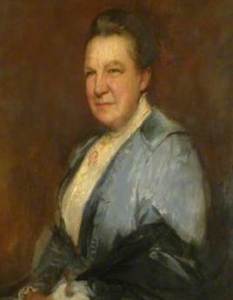
Locally we were able to rely on the support of some incredible, pioneering, formidable women. Henrietta Busk, an innovator in women’s education, had owned a weekend cottage in Chesham Bois since 1903. When war broke out in 1914 she had been on the Amersham Board of Guardians and Rural District Council for 4 years and was now able to call on her phenomenal administrative and organisational skills to support the war effort.
She co-ordinated hospital and convalescent provision, relief committees, working committees, the Amersham Food Committee which allocated rations (one meeting had to discuss 2,500 requests for supplementary meat rations for heavy workers and 3,776 applications for additional sugar for jam making) aid for Belgium refugees (a number of families were billeted in the area) and provision for orphaned children. She fought and won a long battle with her council colleagues to board-out workhouse children. In 1913 there were 40 children living as inmates in the pretty squalid conditions of Amersham Workhouse but within the year the Council had adopted the policy of ‘boarding-out’ children to homes in the parish. This was an early form of fostering, with lady visitors checking up on the children and was seen often as a way of them learning a skill or a trade to further their opportunities in life. In most cases it must have been a marked improvement on the workhouse. And of course during the War provision had to be made for several more families in dire straits because the main bread winner was killed or ‘missing in action’. She also contributed generously from her own funds, donating £15 (around £650 in today’s money) to the Chesham Bois War Fund.
Another Chesham Bois resident who made a significant contribution to the home front is Miss Elizabeth Sudworth Stansfeld Porter who lived at Meadowlead in Bois Lane. Elizabeth Porter acted as secretary and treasurer of the 1st Chesham Bois Scouts from 1910. During WW1, with the Scout Master away on active service, she kept the group going by attending every troop meeting during the war. She co-ordinated the local scouts incredible contribution to the war effort and earned the Troop’s’ everlasting gratitude by writing regularly to every scout on active service.
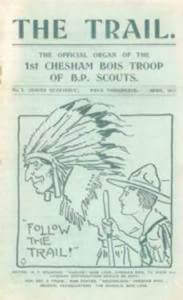 From 1917 the local scout newsletter ‘The Trail’, which she established, was included in every parcel. In return the scouts wrote back to thank Miss Porter and gave details in their letters of the problems of everyday living in the trenches and having to deal with “King Mud”. After the War Miss Porter wrote a detailed account of the Troop’s War Service in the Trail and a very modest account of her own contribution: “It was a very dull morning for me when there was not at least one envelope thrust into the letter-box. From all over the world they came – from France, Belgium, Germany, Egypt, Salonica, Gallipoli, Palestine, India, England, Scotland, Ireland and Wales. None of your half-sheets; good long “talking” letters, written under all sorts of conditions-in the trenches, under shell-fire, guarding search lights, waiting for air-raids, at sea, in huts, tents, billets, or Y.M.C.A canteens. The case of Scout W. Palmer is especially sad; he was taken prisoner early in the war, and died in Germany a few days before the Armistice. Almost the last communication received from him was a card of thanks for a Scout parcel.” [Editor’s note: Chesham Bois Scouts have recently started publishing The Trail again.]
From 1917 the local scout newsletter ‘The Trail’, which she established, was included in every parcel. In return the scouts wrote back to thank Miss Porter and gave details in their letters of the problems of everyday living in the trenches and having to deal with “King Mud”. After the War Miss Porter wrote a detailed account of the Troop’s War Service in the Trail and a very modest account of her own contribution: “It was a very dull morning for me when there was not at least one envelope thrust into the letter-box. From all over the world they came – from France, Belgium, Germany, Egypt, Salonica, Gallipoli, Palestine, India, England, Scotland, Ireland and Wales. None of your half-sheets; good long “talking” letters, written under all sorts of conditions-in the trenches, under shell-fire, guarding search lights, waiting for air-raids, at sea, in huts, tents, billets, or Y.M.C.A canteens. The case of Scout W. Palmer is especially sad; he was taken prisoner early in the war, and died in Germany a few days before the Armistice. Almost the last communication received from him was a card of thanks for a Scout parcel.” [Editor’s note: Chesham Bois Scouts have recently started publishing The Trail again.]

By 1915 Miss Porter’s new neighbours in the Tithe Barn were Josephine and Caroline Richardson, the granddaughters of Sir John Richardson, the artic explorer. From early in the War both sisters volunteered for the Red Cross becoming key organisers of the local Voluntary Aid Detachment. The VADs carried out a range of voluntary activities to support the forces at home and abroad. These included nursing convalescent soldiers, transport duties, and the organisation of hospitals, rest stations (organised at stations to meet soldiers arriving by ambulance train) and working parties. Emergency parcels and packages of games were also sent out to prisoners of war in camps abroad.

The Chesham Bois Work Depot was registered at Four Winds, Copperkins Lane, under the direction of Dr England’s wife, Mary, a nurse from Duns in Scotland (Mrs England was mentioned in the Times report of Queen Victoria’s funeral when returning from the Boer War with other nurses in their scarlet uniforms “they provided the only splash of colour in an otherwise all black crowd”).
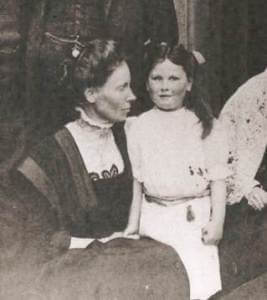
Mary England was Dr England’s practice nurse until he volunteered for active service (he spent most of the war on the hospital ships going between England and Egypt). She kept the practice going and established Chesham Bois VAD Work Depot 1151 – work depots organised the supply of hospital clothing such as shirts, socks, pyjamas, bed-jackets blankets and belts and essential equipment such as bandages, splints, operation stockings and swabs. These were collected, donated or made locally the by working parties and dispatched to the Red Cross HQ in London or direct to auxiliary hospitals such as the Chalfont and Gerrards Cross Hospital at Chalfont St Peter, the Bulstrode Park Hospital at Gerrards Cross.
However many convalescing soldiers were nursed locally in private houses and temporary hospitals and Mary England’s nursing background would have been vital. She would have also been in great demand to provide training in first aid, home nursing and hygiene to other volunteers. We have accounts of two Amersham women that served as VADS at the Front, Eleonora Pemberton in France and Win Brazil in Salonika. Female volunteers over the age of 23 and with more than three months’ hospital experience could be accepted for overseas service.
One of Miss Porter’s scouts published in the Trail, writes after being wounded in France: “My next experience was a rather long journey in a motor ambulance that seemed to jolt me for yards and yards. Then I was put into an English Red Cross train, with English Red Cross Nurses to look after us; and really that was a great comfort. We went from there to a Red Cross Liner, which was fitted up with every comfort a fellow could wish for, and sailed home for Old England”.
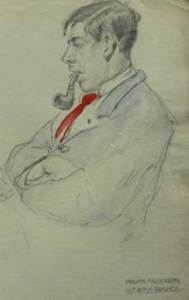

Despite Sir Frederick Treves earlier pronouncement there were 90,000 Red Cross volunteers during WWI and by the end of the war the majority of them were women. We know from Caroline’s WWII service record (the Red Cross Records are very limited for WWI) that her skills were used to provide occupational therapy to convalescing soldiers. The family still have a number of portraits that Car made of convalescent soldiers in their Red Cross blue suits and red ties so that they could be easily recognised. Women in the parish may also have joined the Forces. By 1917 the need to recruit women into the Army, the Navy and Air Force was accepted and the WAAC, WRNS and the WRAF was established to free up more men for the front.
Women were also working in the factories, transport depots, forestry commission, farms and munition factories, often living in hostels or billeted in digs close to their work. Locally the shoe factories in Chesham were flat-out supplying the army with boots and there were munitions factories in High Wycombe, Luton and Marlow.
There was an explosion at the National Fuse Filling factory in Luton 1st March 1918. 6 men and 4 women were killed. May Constable one of the women was given an almost military funeral with her coffin draped with the Union Jack on a Royal Engineers carriage pulled by four black horses. Her gravestone reads “laid down her life making munitions for her country”.
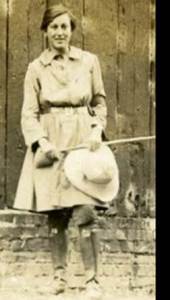
17 year old Florence Fremantle, of Swanbourne, joined the Women’s Land Army after the death of her beloved brother. She was one of 23,000 across the country who volunteered to help food production for her country, which was facing severe shortages because of the success of the German U boat campaign. She was sent to Brockhold Farm, in Hertfordshire, where she apparently relished the outdoor life and wrote poems and songs to encourage national recruitment to the Land Army.
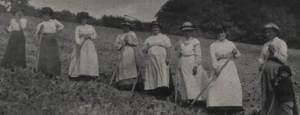
These women working in the field aren’t dressed in Land Army ‘uniform’. We suspect that they are local women doing what they had always done, getting on with working on the land when it was needed. There would have always been women and children working on farms at harvest time and presumably the shortage of men meant more and more women were required to carry out agricultural work throughout the War.
Another pioneering woman associated with the area was Louise Jopling. An incredibly successful artist she was living in Chesham Bois at the end of the war. In the 1918 Chesham Bois Register of Voters she is listed as living at Woodlands, Long Park although she moved to Manor Farm in 1919.
 Louise Jopling founded the Chiltern Club for Arts and Handicrafts which was an important part of the post-war society locally. They had art exhibitions, put on plays, lectures on science and geography, musical recitals, poetry readings, garden openings. At this time, this would have been a major contribution to the cultural and social life of the middle classes locally.
Louise Jopling founded the Chiltern Club for Arts and Handicrafts which was an important part of the post-war society locally. They had art exhibitions, put on plays, lectures on science and geography, musical recitals, poetry readings, garden openings. At this time, this would have been a major contribution to the cultural and social life of the middle classes locally.
After the War, according to the CB Parish Council minutes of 20 March 1919, Henrietta Busk proposed a scheme for the creation of a Chesham Bois War Memorial. As treasurer for the Parish Council she suggested that the council donate the £10 surplus from the Peace Celebrations to the Memorial Fund. Miss Porter was the secretary to the Memorial Committee, organising the subscription and was honoured to represent the Troop at the dedication service of J. H. Kennard’s Memorial on 11th November 1920.
In yet another contribution to the war effort Miss Porter organised the subscription to fund the Troop’s own bronze memorial to the 8 fallen scouts. This is still located in the Pioneer Hall today. Indeed Miss Porter’s sound investments in the War Loan and government bonds provided a lot of the money for building the Pioneer Hall in 1921.

Whilst of course many women were left bereaved by the war or never had the opportunity to marry, many others had gained their first semblance of equality, had taken every opportunity and gained experiences they could never have imagined in 1914. Women gained their first taste of real freedom and for most women life would never be the same again. Their clothing certainly was never the same; there were no more corsets or cumbersome skirts, trousers were worn by women for the first time, long impractical hair had been cut off and at long last limited enfranchisement had been granted.
No memorials exists in Britain to the women who contributed to the war effort in WWI, but they all deserve to be remembered and honoured. By recording their stories and by asking our grandmothers and great-grandmothers what their mothers did in the war we can ensure that their contribution and their history lives on for future generations.
References
Burning to get the Vote – Colin Cartwright
Fighting on the Home Front – Kate Adie
The Virago Book of Women and the Great War
Red Cross Archive
Richardson Family (Alison Napier, Tony Voss and Rosemary)
Roger Cook
History of 1st Chesham Bois Scouts – Trails
Bucks Free PressWmen

